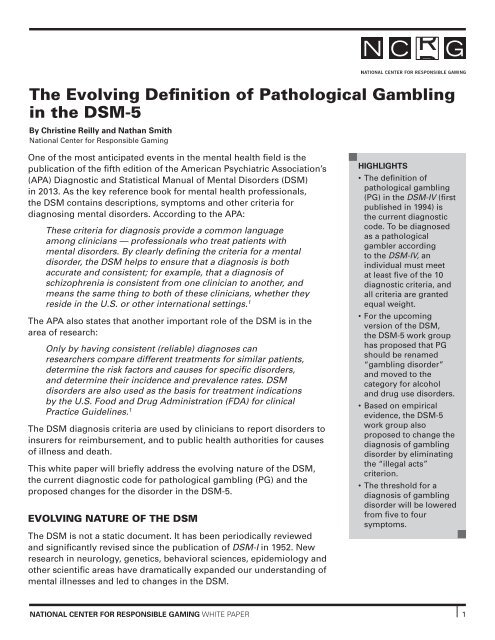Treatment Of Pathological Gambling A Critical Review Of The Literature
- Treatment Of Pathological Gambling A Critical Review Of The Literature Review
- Treatment Of Pathological Gambling A Critical Review Of The Literature Summary

- A psychodynamic approach emphasizes the meaning and consequences of one's behavior. After a brief review of the literature, the authors present the first of a two-part model for psychodynamic psychotherapy with pathological gamblers. In this first phase, the immediate goal is abstinence, and five strategies for obtaining it are discussed. These consist of 1.) breaking through the denial 2.
- Treatment of pathological gambling: a critical review of the literature. Toneatto T(1), Ladoceur R. Author information: (1)Clinical Research Department, Center for Addiction and Mental Health, Toronto, ON, Canada. Tonytoneatto@camh.net The legalization and availability of new forms of gambling are increasing in most Western countries.
- Although gambling treatment dates several decades, few empirically supported treatments for pathological gambling have been developed. This critical review includes only controlled treatment studies. The primary inclusion criterion was randomization of participants to an experimental group and to at least 1 control group.
Treatment Of Pathological Gambling A Critical Review Of The Literature Review

Treatment Of Pathological Gambling A Critical Review Of The Literature Summary


Pathological gambling has so far received scant attention in the psychiatric literature. It has a prevalence rate of about 1% in most countries, and with the deregulation of gambling in the UK the prevalence is set to rise here. To critically review the current literature on pathological gambling as regards the significant psychiatric comorbidities associated with it. Method: The authors synthesized information found via electronic searches (MEDLINE) and bibliographic-directed searches in over 60 publications.
Abstract
The legalization and availability of new forms of gambling are increasing in most Western countries. This trend has contributed to the fact that more individuals are developing gambling problems. As a result, there is a need for effective treatments. Although gambling treatment dates several decades, few empirically supported treatments for pathological gambling have been developed. This critical review includes only controlled treatment studies. The primary inclusion criterion was randomization of participants to an experimental group and to at least 1 control group. Eleven studies were identified and evaluated. Key findings showed that cognitive–behavioral studies received the best empirical support. Recommendations to improve gambling treatment research include better validated psychometric mea-sures, inclusion of process measures, better definition of outcomes, and more precise definition of treatments. The legalization of new types of gambling, which can be defined as an attempt to win money by staking money on an uncertain event, is increasing in most Western countries. With prevalence rates hovering between 1 % and 2%, the increased availability of gambling is expected to lead to greater numbers of people devel-oping gambling problems. Pathological gambling was officially recognized in 1980 with the publication of the third edition of the Diagnostic and Statistical Manual of Mental Disorders (DSM–III; American Psychiatric Association, 1980); it was classified as an impulse control disorder. Pathological gambling is characterized by a loss of control over gambling, deception about the extent of one’s involvement with gambling, family and job disruption, theft, and chasing losses, or the effort to win back money lost while gambling (American Psychiatric Association, 1994). It is now acknowledged that the prevalence of pathological gambling is related to the availability of gambling opportunities, legal or illegal



